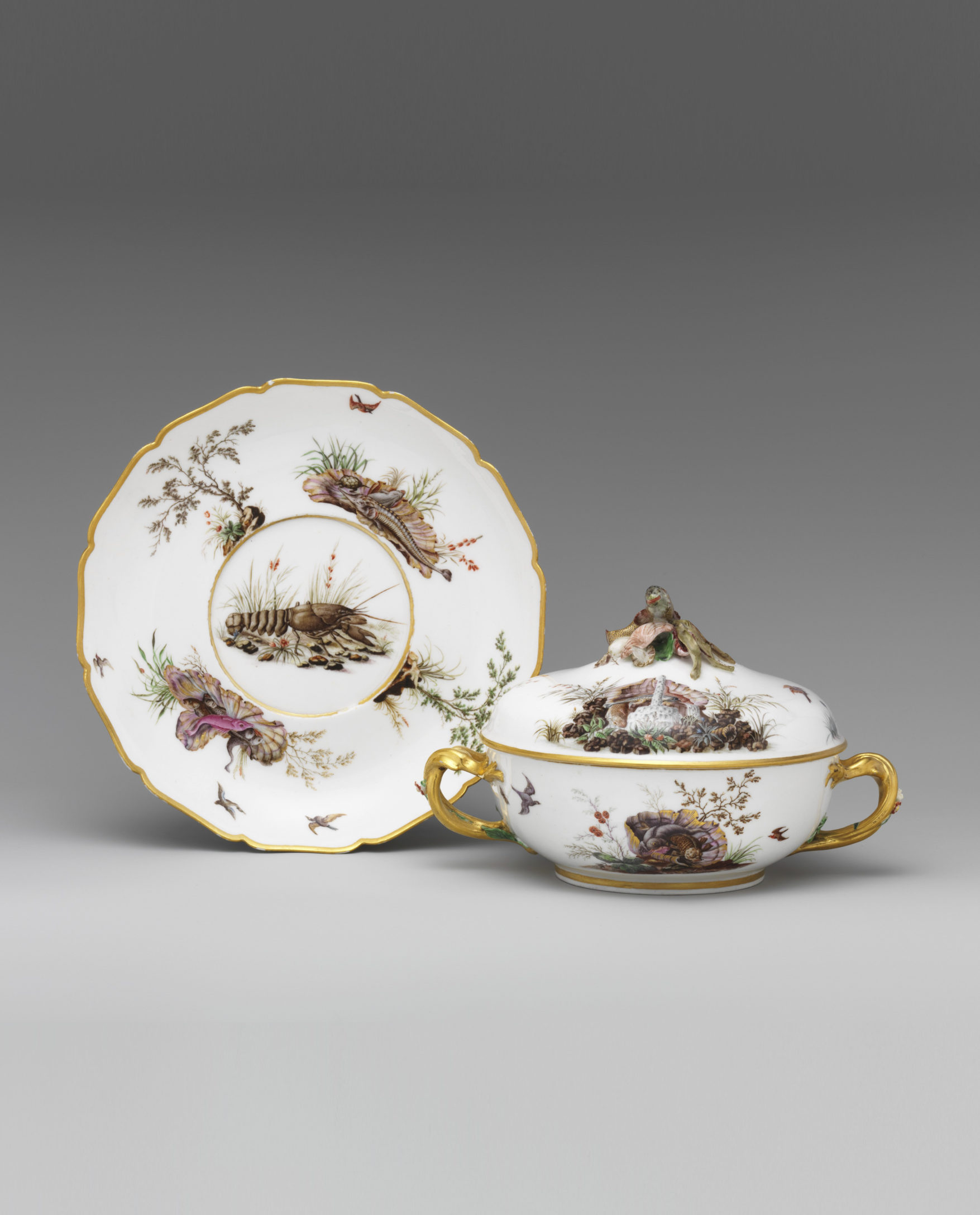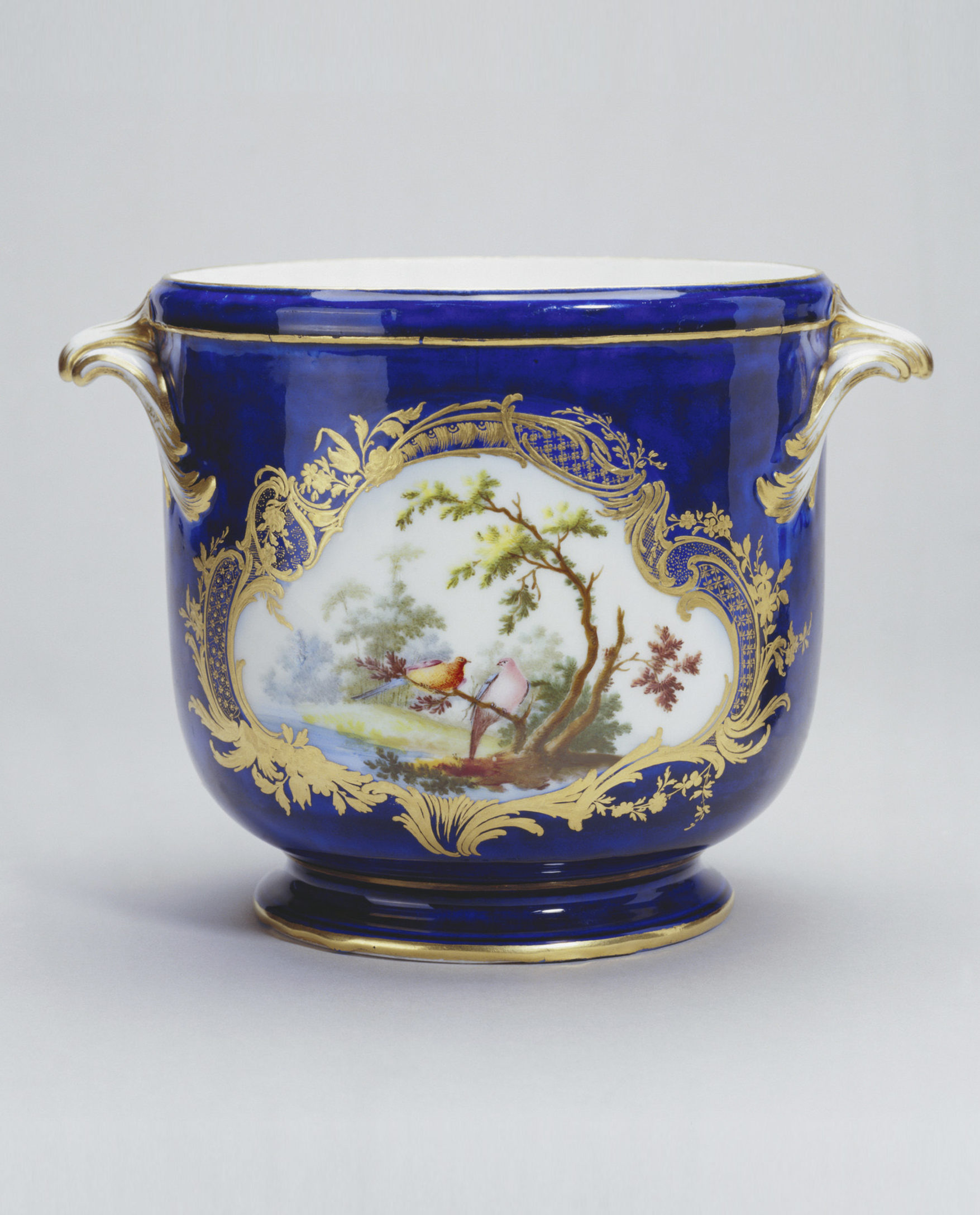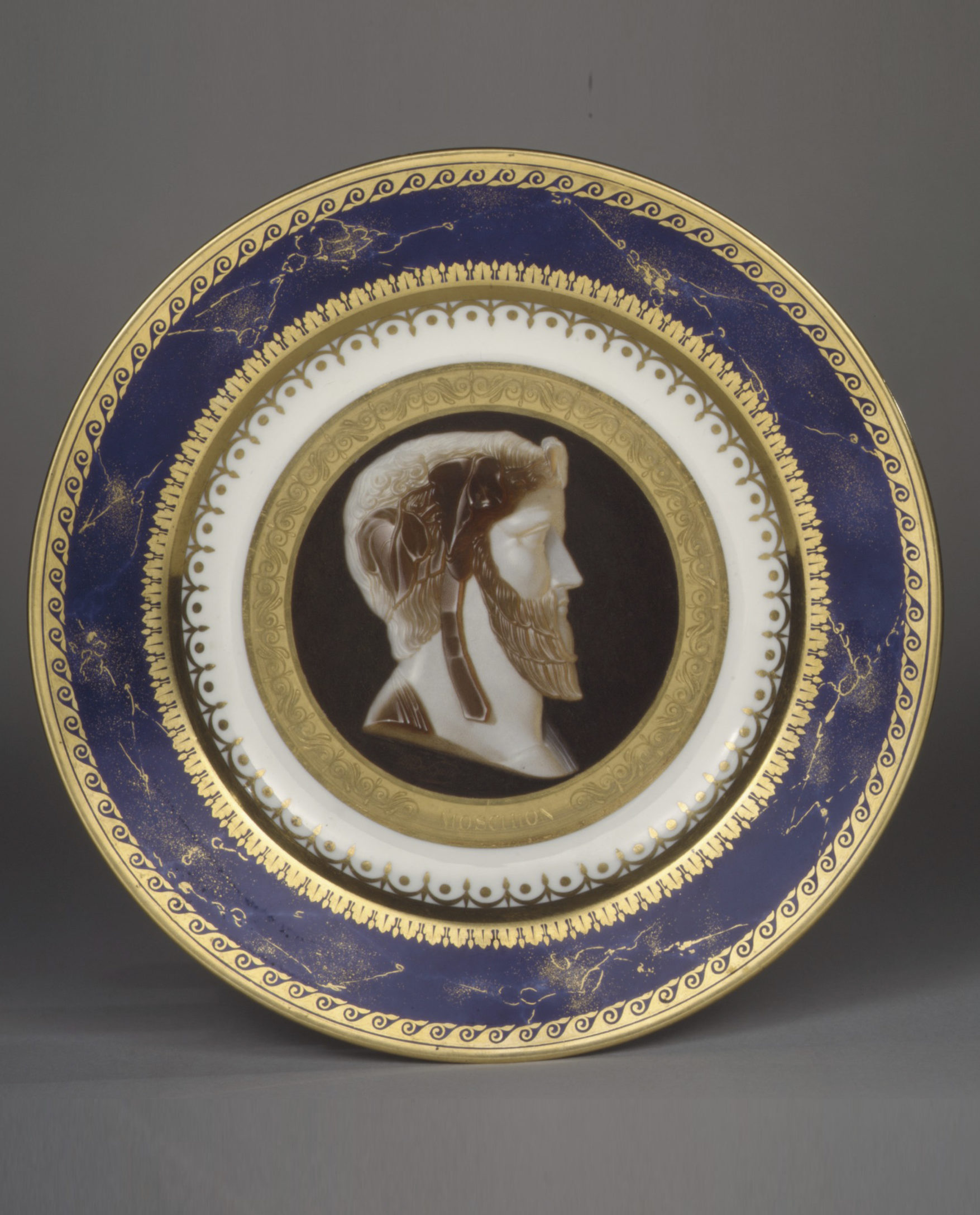The factory at Vincennes began to decorate with fired gold in 1748, having purchased a recipe from a Benedictine monk. The factory was established to produce painted and gilded porcelain imitating Saxon examples, made at the royal porcelain factory in Meissen. Initially, the gilded decoration was painted on as a paste containing powdered gold derived from gold leaf mixed with honey, garlic and vinegar. The most basic decoration, copied the simple filets or line bands used at the Meissen manufactory.
Broth bowl and stand (écuelle ronde et plateau rond), c. 1752-3. (Metropolitan Museum of Art, New York, Inv. no. 50.211.168a, b, .169)






